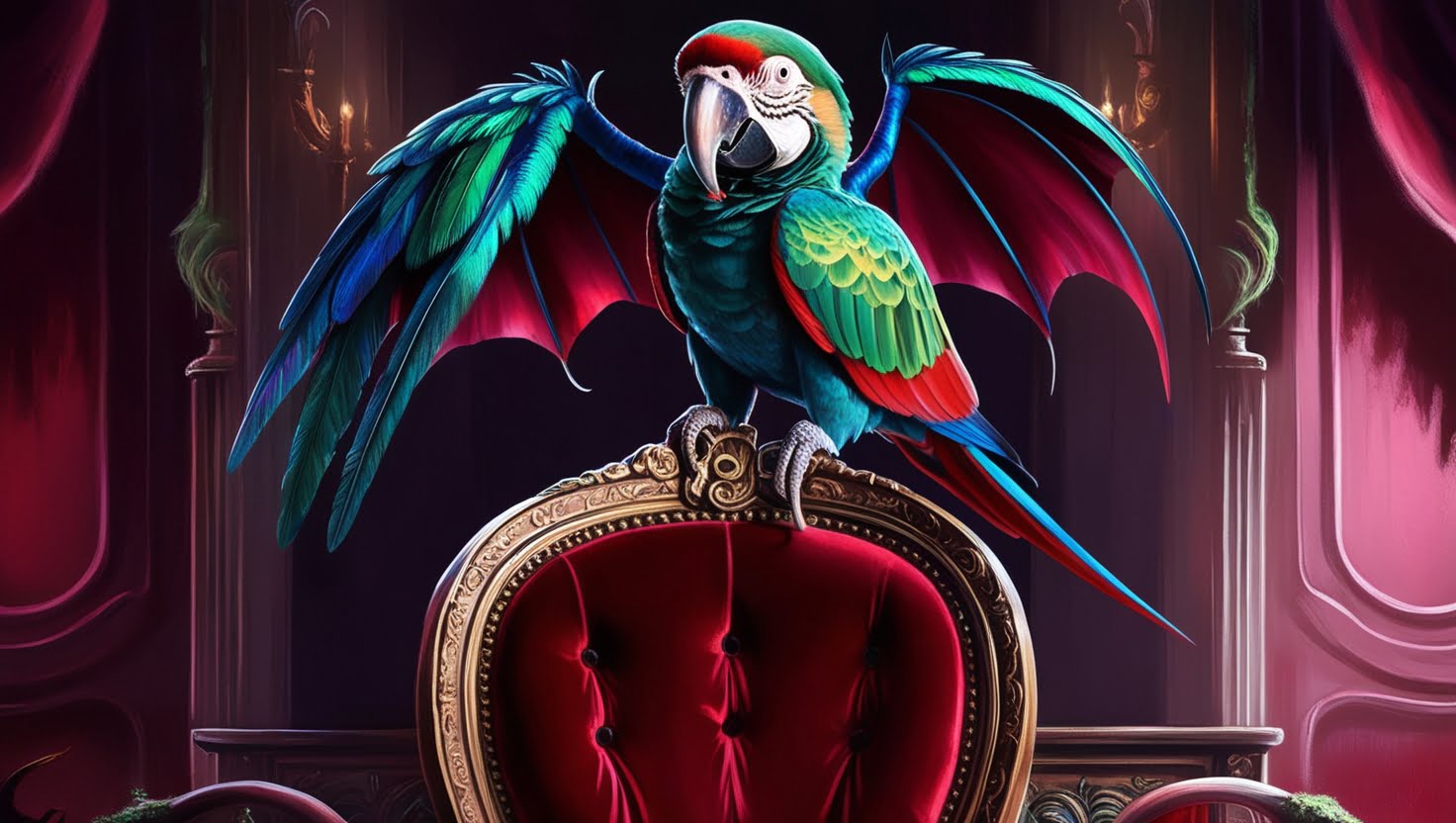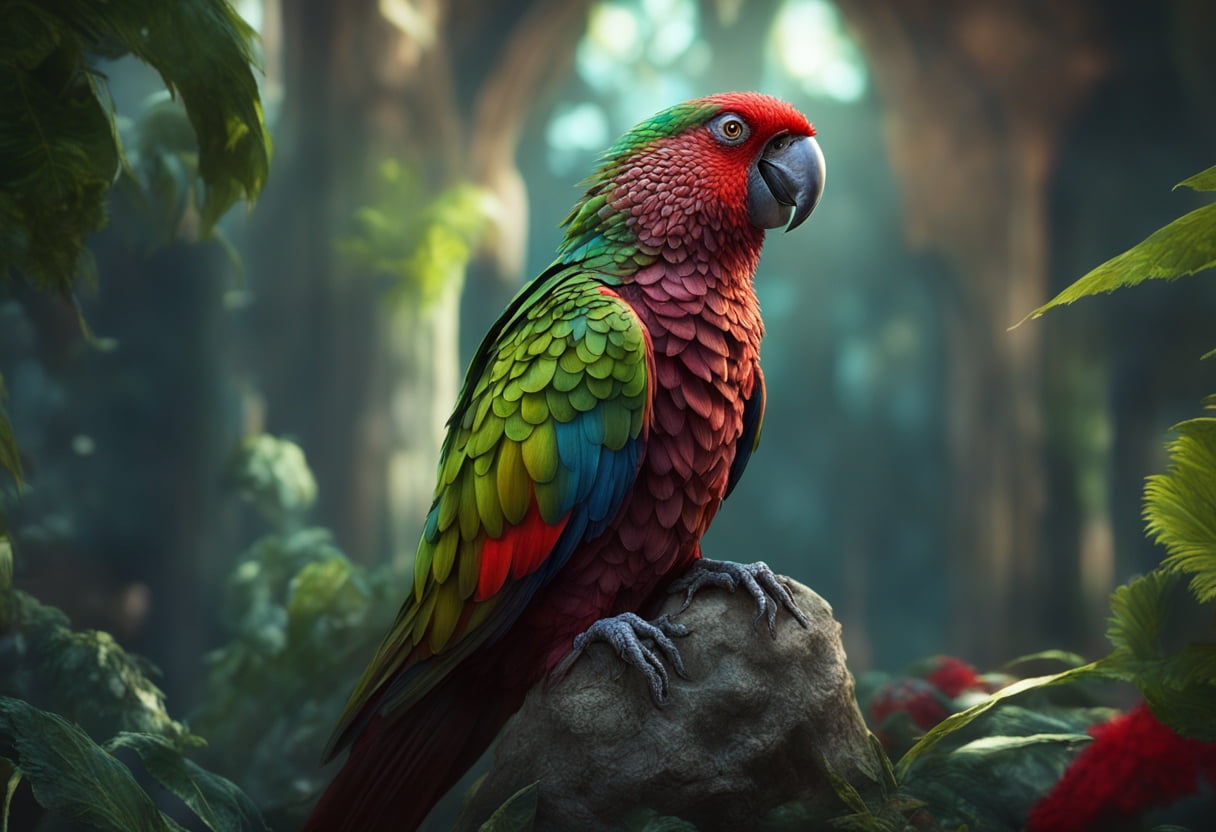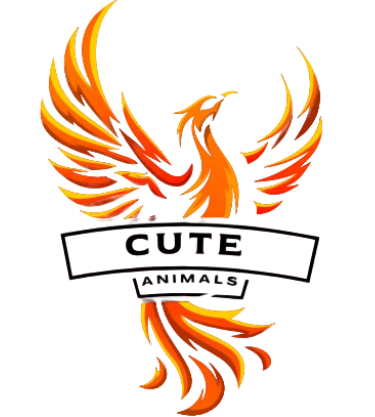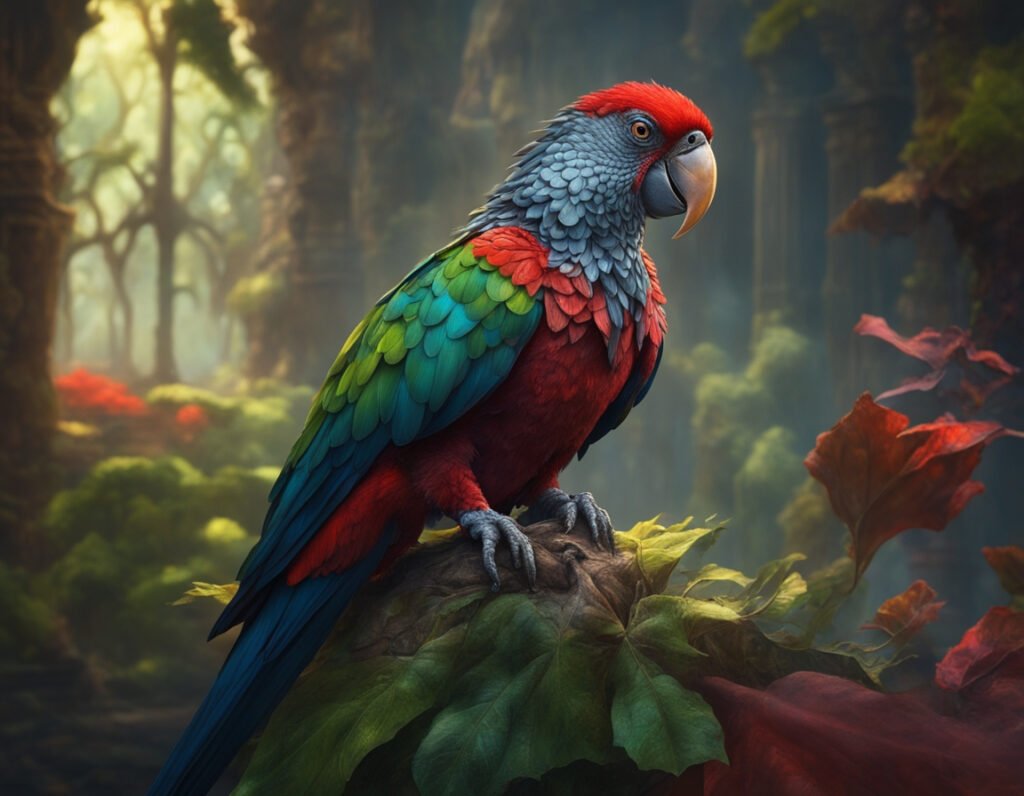The Dracula Parrot, scientifically known as Pesquet’s Parrot, is one of the most unique and fascinating birds in the world. Its striking appearance and intriguing habits make it a subject of great interest among bird enthusiasts and nature lovers. Native to the rainforests of New Guinea, this rare parrot is also known as the Vulturine Parrot due to its vulture-like head and feeding habits. In this article, we delve into 15 interesting facts about the Dracula Parrot, exploring its life, habits, and the conservation efforts to protect this extraordinary species.
1. Distinctive Appearance
The Dracula Parrot is renowned for its distinctive and somewhat gothic appearance. It has a predominantly black plumage with striking red patches on its chest and wings. The feathers on its head are sparse, giving it a vulture-like appearance. This unique look is not just for show; it serves practical purposes in the bird’s daily life.
2. Size and Physical Characteristics
Pesquet’s Parrot is a large bird, with adults typically measuring between 46 and 50 cm (18-20 inches) in length. They have a wingspan of about 70-75 cm (27.5-29.5 inches) and weigh between 680 and 800 grams (1.5-1.8 pounds). Their powerful beak and strong legs are well-suited for their diet and lifestyle.
3. Habitat and Distribution
The Dracula Parrot is native to the rainforests of New Guinea, specifically in the lower and mid-mountain regions. They prefer altitudes between 600 and 1200 meters (1968-3937 feet). These rainforests provide the perfect environment for their feeding and nesting habits.
4. Feeding Habits
Unlike many other parrots, Pesquet’s Parrot has a highly specialized diet. They primarily feed on a variety of figs and occasionally other fruits. Their vulture-like head is an adaptation to their feeding habits, as it prevents fruit juices from matting their feathers while they eat.
5. Social Behavior
Dracula Parrots are known to be quite social, often seen in pairs or small groups. They communicate with each other using a series of loud, harsh calls. These calls can be heard echoing through the rainforest, serving as a way to maintain contact with their flock.

6. Breeding and Nesting
The reproducing season for Pesquet’s Parrot normally happens from June to October. They home in the depressions of enormous trees, where the female lays a grip of two eggs. The chicks fledge after around 10 to 12 weeks.
7. Lifespan
In the wild, Dracula Parrots can live up to 20 years, although their lifespan in captivity can be slightly longer due to the absence of predators and consistent food supply. Their longevity is a testament to their resilience and adaptability in their natural habitat.
8. Conservation Status
Unfortunately, the Dracula Parrot is classified as Vulnerable by the International Union for Conservation of Nature (IUCN). Habitat loss due to deforestation and illegal trapping for the pet trade are significant threats to their population. Conservation efforts are underway to protect their natural habitat and curb illegal activities.
9. Unique Adaptations
Pesquet’s Parrot has several unique adaptations that set it apart from other parrots. Its bare facial skin helps keep its feathers clean while feeding, and its strong beak is perfectly designed for tearing apart tough fruit skins. These adaptations are crucial for its survival in the rainforest.
10. Role in the Ecosystem
Dracula Parrots play an important role in their ecosystem. As frugivores, they help with seed dispersal, contributing to the health and regeneration of the rainforest. Their feeding habits ensure that the seeds of various fruit trees are spread over a wide area, promoting biodiversity.
11. Cultural Significance
In some parts of New Guinea, Pesquet’s Parrot holds cultural significance. The bird’s striking appearance and rarity have made it a symbol of beauty and mystery. In certain local traditions, its feathers are used in ceremonial attire and rituals.
12. Threats and Challenges
Aside from habitat loss and illegal trapping, Dracula Parrots face several other threats. Predation by large birds of prey and invasive species, as well as climate change, pose significant challenges to their survival. Efforts to mitigate these threats are crucial for the conservation of the species.

13. Research and Studies
Ongoing research and studies are vital for understanding the life and habits of Pesquet’s Parrot. Researchers are continuously monitoring their populations, studying their behavior, and working on conservation strategies. These efforts are essential for ensuring the long-term survival of the species.
14. Captive Breeding Programs
Captive breeding programs have been established in various parts of the world to help preserve the Dracula Parrot. These programs aim to maintain a healthy and genetically diverse population of the species, which can be reintroduced into the wild if necessary.
15. How You Can Help
Individuals can also play a role in the conservation of Pesquet’s Parrot. Supporting organizations that work on rainforest conservation, spreading awareness about the bird’s plight, and advocating for sustainable practices can all contribute to the protection of this remarkable species.
Conclusion
The Dracula Parrot, with its unique appearance and fascinating habits, is a true marvel of the avian world. Understanding and appreciating the life and habits of Pesquet’s Parrot is essential for its conservation. By learning more about this incredible bird and supporting efforts to protect its natural habitat, we can ensure that future generations will continue to be captivated by the beauty and mystery of the Dracula Parrot.
FAQs about the Dracula Parrot (Pesquet’s Parrot)
1. What is the Dracula Parrot?
The Dracula Parrot, also known as Pesquet’s Parrot, is a unique and striking bird native to the rainforests of New Guinea. It is known for its black and red plumage and vulture-like head, which give it a distinct appearance.
2. Why is it called the Dracula Parrot?
The Dracula Parrot gets its name from its gothic appearance, particularly its black and red feathers and bare, vulture-like head, which resemble the classic image of Count Dracula.
3. Where can the Dracula Parrot be found?
Pesquet’s Parrot is found in the rainforests of New Guinea, typically in the lower and mid-mountain regions at altitudes between 600 and 1200 meters (1968-3937 feet).
4. What does the Dracula Parrot eat?
The Dracula Parrot primarily feeds on figs and occasionally other fruits. Its bare head helps prevent fruit juices from matting its feathers while feeding.
5. How large is the Dracula Parrot?
An adult Dracula Parrot typically measures between 46 and 50 cm (18-20 inches) in length, with a wingspan of about 70-75 cm (27.5-29.5 inches). They weigh between 680 and 800 grams (1.5-1.8 pounds).
6. What is the lifespan of a Dracula Parrot?
In the wild, Dracula Parrots can live up to 20 years. In captivity, they may live slightly longer due to the absence of predators and consistent food supply.
7. What are the main threats to the Dracula Parrot?
The main threats to Pesquet’s Parrot are habitat loss due to deforestation and illegal trapping for the pet trade. They also face predation, invasive species, and the impacts of climate change.
8. What is the conservation status of the Dracula Parrot?
The Dracula Parrot is classified as Vulnerable by the International Union for Conservation of Nature (IUCN). Conservation efforts are underway to protect their natural habitat and curb illegal activities.
9. How do Dracula Parrots breed?
Dracula Parrots typically breed from June to October. They nest in the cavities of large trees, where the female lays a clutch of two eggs.
10. How long does it take for Dracula Parrot chicks to fledge?
Dracula Parrot chicks fledge after about 10 to 12 weeks. During this time, both parents are actively involved in feeding and caring for the young birds.


2 thoughts on “Dracula Parrot: 15 Interesting Facts About Its Life and Habits”